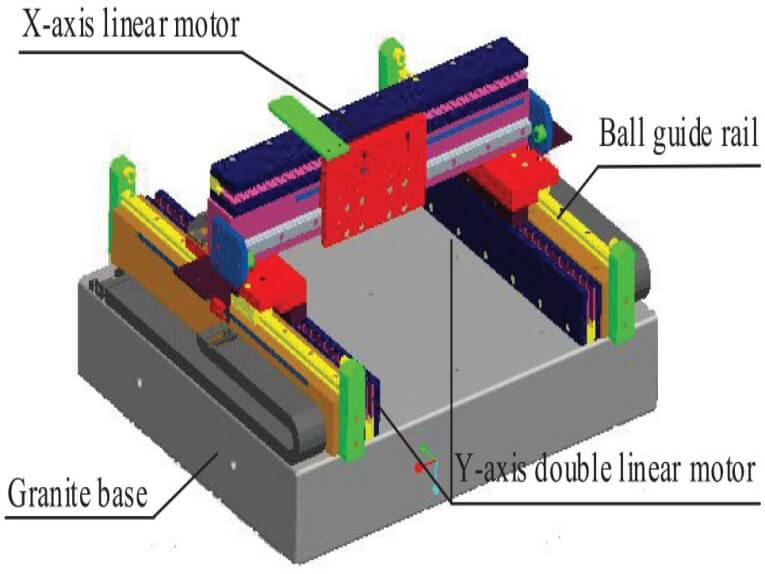Reduced cost of ownership
Direct coupling of the payload to the motor’s moving part eliminates the need for mechanical transmission elements such as leadscrews, timing belts, rack and pinion, and worm gear drives. Unlike brushed motors, there is no contact between the moving parts in a direct drive system. Therefore there is no mechanical wear resulting in excellent reliability and long lifetime. Fewer mechanical parts minimize maintenance and reduce the system cost. The direct drive technology intrinsic to a linear motor based system results in an efficient and effective gearless assembly.
Easy integration
ETEL linear motors are available in a wide range of sizes and can be easily adapted to most applications. ETEL’s unmatched standard product offering includes ironless and ironcore linear motors. Each technology has specific advantages:
- Ironcore linear motors’ configuration minimizes the volume required for integration in machines. They are very compact and produce the greatest force per package size.
- Ironless linear motors’ shape is very thin and gives machine builders great flexibility in locating the motors. In addition, ironless motors provide no force ripple and have very low moving masses.
Dynamic performance
Linear motor applications have a wide range of dynamic performance requirements. Depending on the specifics of a system’s duty cycle, the peak force and maximum speed will drive the selection of a motor:
- An application with a light payload that requires very high speed and acceleration will typically utilize an ironless linear motor (that has a very light moving part containing no iron). As they have no attraction force, ironless motors are preferred with air bearings, when the speed stability has to be below 0.1%.
- Ironcore motors produce greater force per package size by using laminations to concentrate the magnetic flux. With a larger continuous force, these motors fit very well to mid- and high-dynamic applications requesting high duty cycle.
Wide force-speed range
Direct drive linear motors deliver high force over a wide range of speeds, from a stalled or low speed condition to high velocities. Linear motors can achieve very high velocities (up to 15 m/s) with a trade off in force for ironcore motors, as technology becomes limited by eddy current losses.
Linear motors achieve very smooth velocity regulation, with low ripple. The performance of a linear motor over its velocity range can be seen in the force-speed curve present in the correponding data sheet.
Post time: Jul-10-2023








